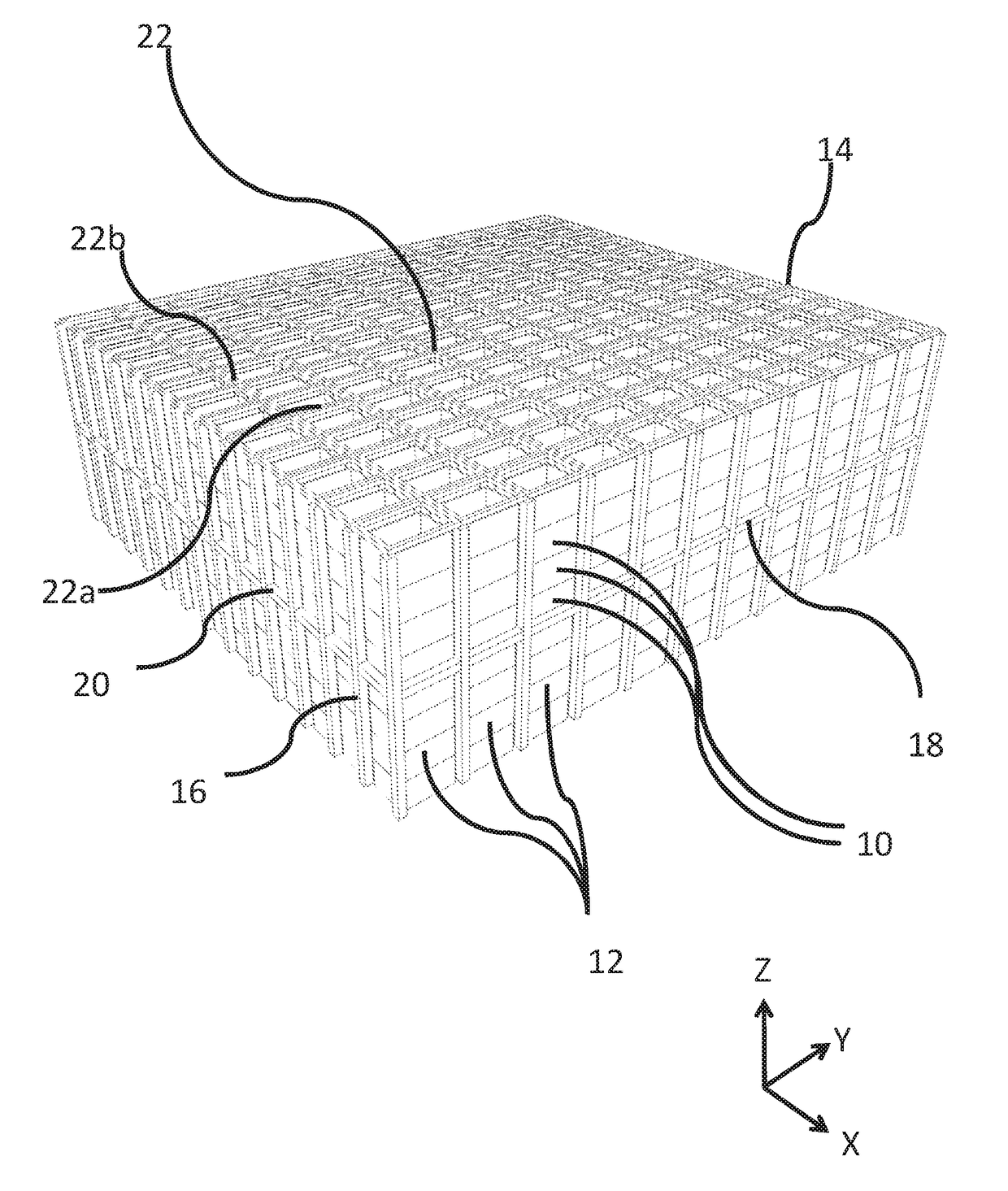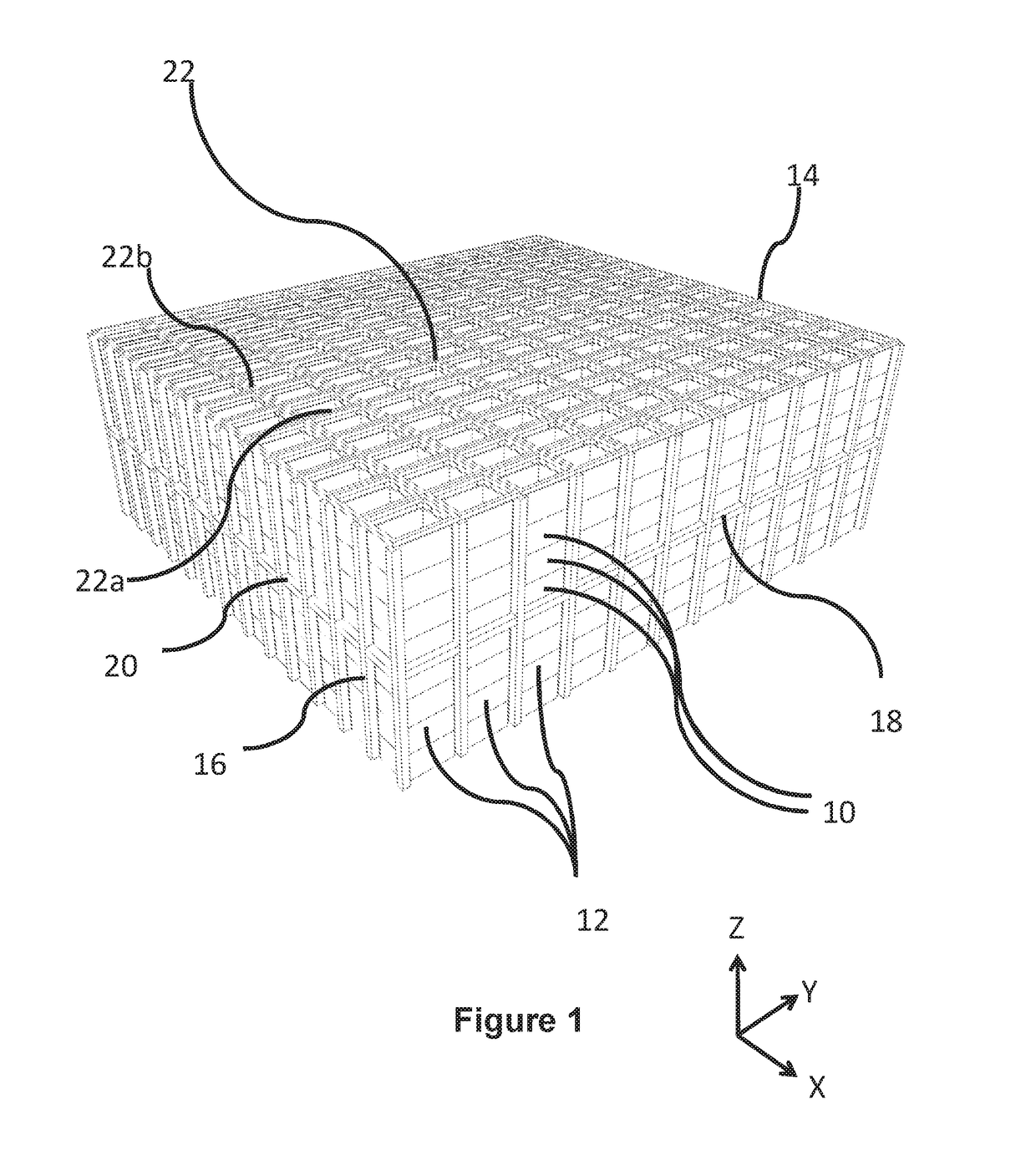Apparatus for retrieving units from a storage system
a technology for storage systems and apparatuses, applied in the direction of gearing, de-stacking articles, electric motor propulsion transmission, etc., to achieve the effect of improving efficiency, balancing system cost and energy consumption, and gaining efficiency
- Summary
- Abstract
- Description
- Claims
- Application Information
AI Technical Summary
Benefits of technology
Problems solved by technology
Method used
Image
Examples
Embodiment Construction
[0066]FIG. 5 shows a load handling device 100 according to an embodiment of the invention. The load handling device 100 comprises a vehicle 102 equipped with a winch or crane mechanism 104 to lift a storage container or bin 106, also known as a tote, from above. The crane mechanism 104 includes winch cables 108 and a grabber plate 110. The grabber plate 110 is configured to grip the top of the container 106 to lift it from a stack of containers 106 in a storage system of the type shown in FIGS. 1 and 2.
[0067]Referring also to FIGS. 6(a) and 6(b), the vehicle 102 comprises an upper part 112 and a lower part 114.
[0068]The lower part 114 is fitted with two sets of wheels 116, 118, which run on rails provided at the top of the frame of the storage system. At least one wheel of each set 116, 118 is driven to enable movement of the vehicle 102 in X- and Y-directions respectively along the rails. As will be explained below, one or both sets of wheels 116, 118 can be moved vertically to lif...
PUM
 Login to View More
Login to View More Abstract
Description
Claims
Application Information
 Login to View More
Login to View More - R&D
- Intellectual Property
- Life Sciences
- Materials
- Tech Scout
- Unparalleled Data Quality
- Higher Quality Content
- 60% Fewer Hallucinations
Browse by: Latest US Patents, China's latest patents, Technical Efficacy Thesaurus, Application Domain, Technology Topic, Popular Technical Reports.
© 2025 PatSnap. All rights reserved.Legal|Privacy policy|Modern Slavery Act Transparency Statement|Sitemap|About US| Contact US: help@patsnap.com



